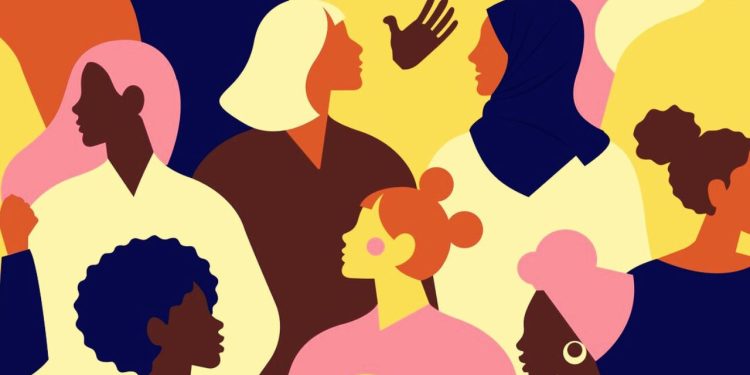From interviews to gossip, celebrity updates dominate digital media. Celebrity interviews are frequently prioritised by media outlets and digital platforms since they are thought to be a guaranteed way to increase audience and income.
A closer look at Pakistani celebrity interviews reveals an unsettling trend: the posing of unusual and often intrusive questions to female stars that go beyond the bounds of professionalism. These questions, which frequently delve into personal lives and physical appearances, highlight the deep rooted biases that exist in our culture. Female celebrities, despite their accomplishments and talent, find themselves in a vulnerable situation where intrusive questioning has become the depressing standard.
These interviews, which range from marital status inquiries to body-shaming questions, propagate damaging stereotypes and reinforce cultural expectations from women.
It is past time to expose these biases and call into question the societal norms that permit such invasive probing, establishing an environment that respects women’s dignity in public. Examining these taboo issues might spark a conversation about the need for change in how we approach and address the problems faced by female celebrities, ultimately contributing to a more inclusive and respectful media environment.
To give an example, famous actor Fawad Khan has frequently appeared in a number of illustrious interviews, talk shows, and magazine articles. While Khan, without a doubt, ticks all the boxes of being a success story, concerns pertaining to the representation of women can also be raised as men like him receive a lot of positive attention in the media.
On the contrary, meaningful interviews are a rarity and are often reduced to certain types of personalities.
Women like Sharmeen Obaid-Chinoy and Meenu Gaur are among the small number of local filmmakers who are still the exception rather than the rule in the industry. This dearth is, thus, reflective of a larger gender gap in the field.
Selective Coverage
Extensive coverage of celebrity weddings or fashion, for example, tends to draw attention away from greater gender-based issues — crucial concerns ranging from job discrimination to domestic violence.
This norm may give rise to the mistaken belief that only extraordinary people can overcome gender bias, rather than appreciating the joint efforts required for societal change. Constant exposure to celebrity-centric narratives has a possibility to alter how the audience perceives women’s problems.
In 2023, when Ushna Shah got married, the public not just focused only focused on her wedding look, criticising it for being Indian/Mongolian style; but she was also targeted online for dancing.
Stereotyping
By reducing female celebrities to roles connected to beauty, fashion, and entertainment, media tends to promote gender stereotypes. In Pakistan, marketing for household products, such as kitchen equipment and cleaning supplies, mostly targets female consumers. Even though these advertisements may appear harmless, they can have a big impact on the lives of regular women. While these are culturally significant components of women’s life in the country, they don’t represent the whole range of their experiences. This could downplay women’s achievements and challenges in other sectors.
Cutting Away the Layers of Gender Conflict
Intersectionality pulls together strands of race, social background, ethnicity, and more in the patchwork of Pakistan’s gender problems, creating a complex and sometimes disregarded narrative.
With a diverse ethnic population, experiences of women differ greatly. Pashtun women in Khyber Pakhtunkhwa, for example, may confront different obstacles than Punjabi women.
Additionally, economic imbalances are deeply connected with gender conflicts which means women from poorer socioeconomic backgrounds may be hindered in attaining education, healthcare, and other opportunities, worsening the gender gap.
The youngest-ever Nobel laureate, Malala Yousafzai, is a global representation of determination, bravery, and support for girls’ education. Her extraordinary journey provides a powerful illustration of intersectionality, which is the interconnectedness of social categories including gender, race, and socioeconomic status. Malala’s tale shows us how gender, education, and activism come together, giving us important new perspectives on the struggles encountered by those who are disadvantaged and the opportunity for significant shifts.
Significance of all voices
For women to be represented on screens through relatable content and discussions is necessary in order to create a sense of agency. Over and above, discussion on real life struggles is a means to bring about change in society’s mindset.
There are some local alternative media channels, pages, and interview styles that prioritise fair conversations and move away from the celebrity-centric approach.
To give an example, alternative media like Mashion’s roundtable discussion fosters conversations about female struggles. Models like Frieha Altaf and Nadia Hussain addressing the infamous casting couch and beauty standards, demonstrates the power of roles in reshaping the narrative around female struggles.
Similarly, Kanwalful and Ibex Media Network are boosting local women’s voices through neutral interviews, demonstrating their dedication to furthering fair and unbiased discussions about female problems.
These venues allow women to communicate their struggles and accomplishments without fear of being judged, breaking down cultural stereotypes and paving the road for a more inclusive representation of women in the media.


